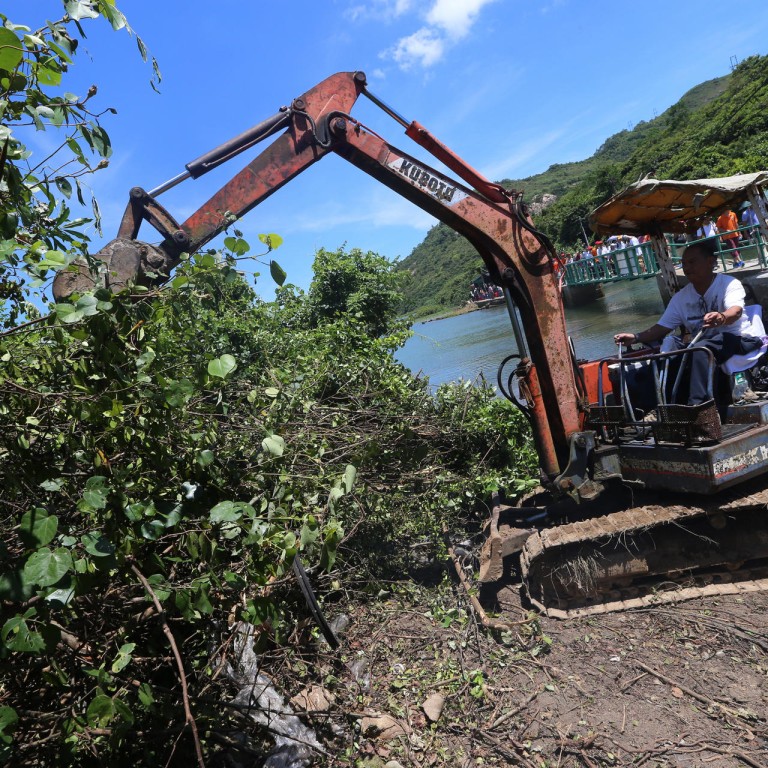
Government too weak to fight villagers over small house policy
The weekend saw another outrage perpetrated by indigenous New Territories villagers in protest against government zoning plans.
A group of them used excavators and machetes to cut down a mangrove at Tai Ho Wan near Tung Chung, which has been designated a Site of Special Scientific Interest. The villagers are concerned that once the area was formally zoned, it would restrict their ability to farm the land and more importantly their "right" to build a small house.
This is just another example of the low-level lawlessness that pervades the New Territories, and to a lesser extent elsewhere in Hong Kong. Nobody is likely to be prosecuted for this. It's also another example of the government's weakness in dealing with the problem. It set up a committee in 2002 to consider the matter, but when asked its progress will say it is "still studying" the issue.
It is Hong Kong governance at its worst, involving the interplay of politics, property and money.
The policy was set up in 1972 as a temporary measure to deal with the low level of housing in the New Territories. Indigenous male villagers who can trace their descent from a resident in 1898 of a recognised village are eligible.
Since the Lands Department does not keep a list of eligible villagers, village heads have authority to verify the credentials of applicants. Unsurprisingly this has given rise to corruption and irregularities.
It is now recognised that the supply of housing in the New Territories has radically improved since the 1970s, so there is no need for this policy.
However, it has become a valuable perk, and one they will not give up easily. Villagers now believe it is a "right" protected by Article 40 of the Basic Law, though it has yet to be tested in the courts. It is clearly unfair that one section of the community should be given this significant financial opportunity while urban dwellers aren't.
Aside from being discriminatory, it has led to poor planning and uncontrolled suburban sprawl. Some villages have been cut off from vehicular access because some landowner, incredibly, has been able to build a house directly over the only access road.
There has also been a certain amount of illegal destruction of rural land to convert rural lands to "possible" development sites, the Civic Exchange points out in its report last year "Small House Policy II, An Update".
The same report mentions that, the managing director of Surpass Property Strategy Consultancy said, in 2002, that more than 80 per cent of the small houses were built for sale "rather than for occupancy by the indigenous villager".
The government for its part has sat on its hands. There was brave talk from Carrie Lam Cheng Yuet-ngor - when she was development secretary - who said the policy should be discontinued. But that dried up after she became chief secretary.
Since then the government has had so many political battles to fight that it doesn't have the stomach for taking on new ones. So when faced with angry villagers it invariably backs down. What are the prospects for action any time soon on this?
Despite the environmental degradation, poor planning, the corruption it engenders and illegal development, the government is likely to do very little. It needs the support of the Heung Yee Kuk which represents indigenous villagers. The group commands a significant number of votes on the chief executive selection committee and in the Legislative Council. In view of the government's reluctance to deal with the small house policy we are likely to see more of the kind of events that occurred over the weekend. The government's strategy appears to be to leave it to the next administration.
Have you got any stories that Lai See should know about? E-mail them to [email protected]

